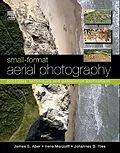As the need for geographical data rapidly expands in the 21st century, so too do applications of small-format aerial photography for a wide range of scientific, commercial and governmental purposes. Small-format Aerial Photography (SFAP) presents basic and advanced principles and techniques with an emphasis on digital cameras. Unmanned platforms are described in considerable detail, including kites, helium and hot-air blimps, model airplanes, and paragliders. Several case studies, primarily drawn from the geosciences, are presented to demonstrate how SFAP is actually used in various applications. Many of these integrate SFAP with ground-based investigations as well as conventional large-format aerial photography, satellite imagery, and other kinds of geographic information. - Full-color photographs throughout - Case studies from around the globe - Techniques presented allow for image resolution impossible to match via traditional aerial photography or satellite datasets - Glossary clarifies key terms
Autorentext
Dr. Aber has a PhD in Geology from the University of Kansas. His interests and research experience are wide ranging in geology, tectonics, landscape evolution, wetland environments, remote sensing, aerial photography, and energy resources. He has conducted field investigations across the United States as well as Canada, Scandinavia, Central Europe and Japan. He is a distinguished professor at Emporia State University, Kansas.
Klappentext
As the need for geographical data rapidly expands in the 21st century, so too do applications of small-format aerial photography for a wide range of scientific, commercial and governmental purposes. Small-format Aerial Photography (SFAP) presents basic and advanced principles and techniques with an emphasis on digital cameras. Unmanned platforms are described in considerable detail, including kites, helium and hot-air blimps, model airplanes, and paragliders. Several case studies, primarily drawn from the geosciences, are presented to demonstrate how SFAP is actually used in various applications. Many of these integrate SFAP with ground-based investigations as well as conventional large-format aerial photography, satellite imagery, and other kinds of geographic information.
- Full-color photographs throughout
- Case studies from around the globe
- Techniques presented allow for image resolution impossible to match via traditional aerial photography or satellite datasets
- Glossary clarifies key terms
Inhalt
Part I
Chapter 1: Introduction to small-format aerial photography
1-1. Overview
1-2. Brief history
1-2.1. 19th century
1-2.2. 20th century
1-3. Photography and imagery
1-4. Conventional aerial photography
1-5. Small-format aerial photography
1-6. Summary
Chapter 2: Basic principles of SFAP
2-1. Remote sensing
2-1.1. Ideal remote sensing
2-1.2. Actual SFAP
2-2. Common aspects of SFAP
2-2.1. Image vantage
2-2.2. Photographic scale and resolution
2-2.3. Relief displacement
2-2.4. Stereoscopic images
2-3. Photographic storage
2-4. Summary
Chapter 3: Photogrammetry
3-1. Introduction
3-2. Geometry of single photographs
3-2.1. Vertical photography
3-2.2. Tilted photography
3-2.3. Interior orientation
3-2.4. Exterior orientation
3-3. Geometry of stereophotographs
3-3.1. Principle of stereoscopic viewing
3-3.2. Base-height ratio and stereoscopic coverage
3-3.3. 3D measurements from stereomodels
3-3.4. Creating stereomodels with aerial triangulation by bundle-block adjustment
3-4. Quantitative analysis of photographs
3-4.1. Measuring and mapping from single photographs
3-4.2. Manual measuring and mapping from stereomodels
3-4.3. Automatic DEM extraction from stereomodels
3-5. Summary
Chapter 4: Lighting and atmospheric conditions
4-1. Introduction
4-2. Multiview-angle effects
4-3. Bidirectional reflectance distribution function
4-4. Multispectral effects
4-5. Latitude and seasonal conditions
4-6. Clouds
4-7. Shadows
4-8. Summary
Chapter 5: Photographic composition
5-1. Introduction
5-2. Basic elements of photographic composition
5-2.1. Oblique and vertical views
5-2.2. Linear features
5-2.3. Image depth
5-2.4. Pattern and texture
5-2.5. Color
5-3. Combining compositional elements
5-4. Photographs vs. human vision
5.5. Summary
Part II
Chapter 6: Cameras for SFAP
6-1. Introduction
6-2. Film camera basics
6-3. Digital camera basics
6-3.1. Types of digital cameras
6-3.2. Image sensors
6-3.3. Image file formats
6-4. Camera geometry and light
6-4.1. Focal length
6-4.2. Lens aperture
6-4.3. Shutter speed
6-4.4. Film speed or ISO rating
6-4.5. Camera exposure settings
6-4.6. Image degradation
6-5. Color-infrared photography
6-6. Camera capabilities for SFAP
6-6.1. Camera lens
6-6.2. Image sensor
6-6.3. File format
6-6.4. Camera type
6-6.5. Camera calibration
6-7. Summary
Chapter 7: Camera mounting systems
7-1. Introduction
7-2. Camera operation
7-3. Detachable mounts
7-3.1. Single-camera suspended rigs
7-3.2. Multiple-camera suspended rigs
7-3.3. Attaching suspendable mounts to a platform
7-3.4. Detactable modular unit mounts
7-4. Fixed mounts
7-5. Summary
Chapter 8: Platforms for SFAP
8-1. Introduction
8-2. Manned light-sport aircraft
8-2.1. Powered light-sport aircraft
8-2.2. Unpowered light-sport aircraft
8-3. Lighter-than-air platforms
8-3.1. Lifting gases
8-3.2. Helium blimp
8-3.3. Hot-air blimp
8-4. Kite aerial photography
8-4.1. Kites for SFAP
8-4.2. Kite-flying equipment
8-4.3. Ground operations
8-5. Drones for SFAP
8-5.1. Basic model airplane
8-5.2. Autopiloted model airplane
8-5.3. Powered paraglider
8-6. Pros and cons of different platforms
8-7. Summary
Chapter 9: SFAP survey planning and implementation
9-1. Introduction
9-2. Travel and equipment logistics
9-3. Site accessibility and characteristics
9-3.1. Local site accessibility
9-3.2. Flight obstacles
9-3.3. Local wind conditions
9-3.4. High-altitude SFAP
9-4. Ground Control
9-4.1. GCP installation
9-4.2. GCP coordinate measurement
9-5. Flight planning considerations
9-5.1. Image scale and resolution
9-5.2. Stereoscopic and large-area coverage
9-6. Flight planning example
9-6.1. Initial calculations: Complete coverage with single image
9-6.2. Revised calulations: Optimal image resolution
9-6.3. Consequences for aerial survey design
9-6.4. Ideal flightline calculation
9-7. Flight planning for oblique SFAP
9-8. Legal issues
9-8.1. German regulations
9-8.2. Regulations in the U.S. and other countries
9-8.3. Insurance
9-9. Summary
Chapter 10. Image interpretation
10-1. Introduction
10-2. Image interpretability
10-3. SFAP interpretation
10-3.1. Water and drainage
10-3.2. Geomorphology
10-3.3. Vegetation and agriculture
10-3.4. Cultural heritage and archaeology
10-3.5. Soils
10-4. Summary
Chapter 11: Image processing and analysis
11-1. Introduction
11-2. Geometric correction and georeferencing
11-2.…
